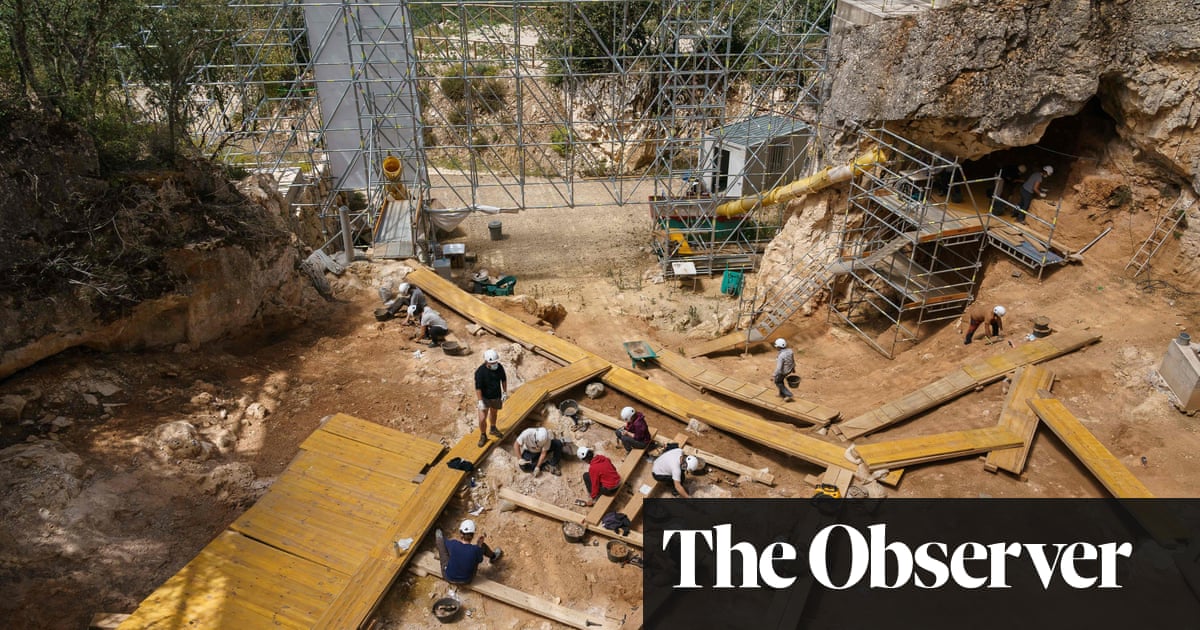
Bears do it. Bats do it. Even European hedgehogs do it. And now it turns out that early humans might have been on it too. According to fossil experts, they hibernated.
Evidence of bones found at one of the world’s most important fossil sites suggests that hundreds of thousands of years ago, our hominid predecessors managed to handle extreme cold by sleeping through the winter.
The scientists claim that lesions and other signs of damage in fossilized bones of early humans are the same as those left in the bones of other hibernating animals. These suggest that our predecessors endured the harsh winters of the time by slowing their metabolism and sleeping for months on end.
The conclusions are based on excavations in a cave called Sima de los Huesos – the pit of bones – in Atapuerca, near Burgos in northern Spain.
Over the past three decades, the fossilized remains of several dozen people have been scraped from sediments found at the bottom of the vertiginous 15-meter shaft that forms the central part of the well at Atapuerca. The cave is in fact a mass grave, say researchers who have found thousands of teeth and pieces of bone that appear to have been deliberately dumped there. These fossils date back to more than 400,000 years ago and probably came from early Neanderthals or their predecessors.
Map of Burgos
The site is one of the planet’s most important paleontological treasures and has provided important insights into the way human evolution progressed in Europe. But now researchers have taken an unexpected turn to this story.
In a paper published in the journal AnthropologyJuan-Luis Arsuaga – who led the team that first excavated the site – and Antonis Bartsiokas, of the Democritus University of Thrace in Greece, claim that the fossils found there show seasonal variations that suggest bone growth over several months from every year.
They suggest that these early humans were “in metabolic states that helped them survive in freezing conditions for long periods of time with limited food supplies and sufficient stores of body fat.” They hibernated and this is recorded as disturbances in bone development.
The researchers acknowledge that the idea “may sound like science fiction,” but point out that many mammals, including primates such as bushbabies and lemurs, do this. “This suggests that the genetic basis and physiology for such hypometabolism could be preserved in many mammalian species, including humans,” say Arsuaga and Bartsiokas.
The pattern of lesions found in the human bones in the Sima Cave is consistent with lesions found in the bones of overwintering mammals, including cave bears. “A hibernation strategy would have been the only way to survive by spending months in a cave because of the frigid conditions,” the authors state.
They also point out that the remains of a hibernating cave bear (Ursus bye) have also been found in the Sima Well, making it all the more believable to suggest that humans did the same “to survive the frigid conditions and food scarcity as the cave bears.”
The authors examine several counter-arguments. Modern Inuit and Sami people – although they live in equally harsh, cold conditions – do not hibernate. So why did the people in the Sima cave do?
The answer, Arsuaga and Bartsiokas say, is that fatty fish and reindeer fat provide food for the Inuit and Sami people in the winter, eliminating the need to hibernate. In contrast, the area around the Sima site would not have provided enough food half a million years ago. As they say, “The desiccation of Iberia could not have provided enough high-fat food for the people of Sima during the harsh winter – so they resorted to hibernation in the cave.”

“It’s a very interesting argument and it will certainly stimulate debate,” said forensic anthropologist Patrick Randolph-Quinney of Northumbria University in Newcastle. However, there are other explanations for the variations seen in the bones found in Sima and these need to be fully addressed before we can come to realistic conclusions. I don’t think that has happened yet. “
Chris Stringer of the Natural History Museum in London pointed out that large mammals such as bears don’t actually hibernate because their large bodies cannot lower their core temperature enough. Instead, they enter a less deep sleep known as torpor. In such a state, the energy requirements of the human brains of the Sima people would have remained very high, creating an additional survival problem for them during the anesthetic.
“Nonetheless, it is a fascinating idea that can be tested by examining the genomes of the Sima people, Neanderthals and Denisovans for signs of genetic changes related to the physiology of anesthesia,” he added.